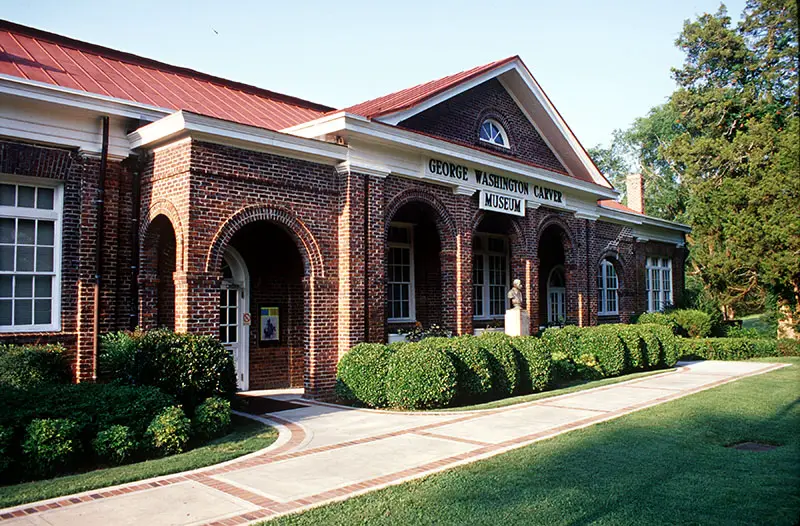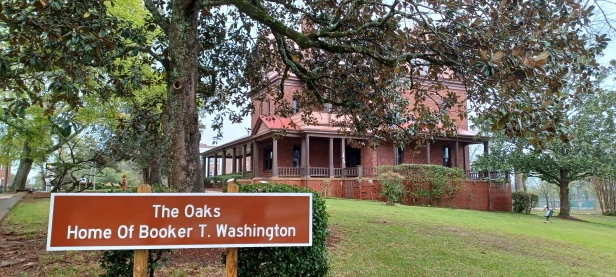Gardens have always been more than just beautiful spaces—they are reflections of history, culture, and resilience. In Black American history, gardens have served as sanctuaries, sources of sustenance, and powerful symbols of community and creativity. These historic gardens tell stories of self-sufficiency, resistance, and the enduring connection between land and identity. From preserving African agricultural traditions to fostering social change, these gardens are rich with meaning and deserve to be celebrated. Here are five historic Black American gardens that everyone should know about and the legacies they continue to inspire.
1. The African American Heritage Garden at the Atlanta History Center

The African American Heritage Garden at the Atlanta History Center honors the agricultural traditions and ingenuity of enslaved people and their descendants. This beautifully curated space showcases heirloom crops, medicinal herbs, and plants that were essential to the survival and resilience of African Americans. The garden highlights how enslaved people used their knowledge of plants not only for sustenance but also for healing and spiritual practices.
Crops like okra, black-eyed peas, and collard greens serve as living symbols of the transatlantic journey and the cultural retention of African agricultural practices. Interpretive displays in the garden provide visitors with insights into the ingenuity of enslaved gardeners, who cultivated food and medicinal plants despite harsh conditions. The garden also emphasizes the role of community and the importance of land in preserving identity. It stands as a powerful tribute to the enduring contributions of African Americans to American agriculture and culture.
2. Dr. George Washington Carver’s Experimental Gardens & Museum

Dr. George Washington Carver, one of the most influential agricultural scientists in history, created experimental gardens at Tuskegee University to teach sustainable farming techniques to Black farmers. These gardens were a testament to Carver’s dedication to education and self-reliance within Black communities during the early 20th century. Carver’s gardens demonstrated crop rotation, soil enrichment, and innovative uses for crops like peanuts and sweet potatoes.
These spaces not only showcased Carver’s groundbreaking agricultural research but also emphasized the importance of food security and economic independence for marginalized communities. Visitors to Tuskegee could see firsthand how Carver’s techniques revitalized depleted soil, empowering Black farmers to increase yields and reduce reliance on cash crops like cotton. Carver’s gardens were also a hub for collaboration, where students and farmers learned to use the land to sustain their families and build their futures. Today, his legacy continues to inspire environmental stewardship and the power of education through agriculture.
3. Monticello’s Restored Vegetable Garden and Enslaved Gardeners’ Contributions

While Monticello is often associated with Thomas Jefferson, the site’s vegetable garden also tells the untold stories of the enslaved gardeners who cultivated the land. Enslaved individuals like Wormley Hughes played a crucial role in maintaining the sprawling gardens that are now recognized as a historical landmark. According to Monticello’s official website, Hughes managed the care of crops and ornamental plants, demonstrating expertise in horticulture that shaped the estate’s success.
The restored vegetable garden at Monticello includes crops like sweet potatoes, okra, and peanuts—foods that connect the estate to African agricultural traditions. This space is not only a reflection of Jefferson’s experiments in farming but also a testament to the skill and labor of enslaved individuals who ensured its productivity. Today, visitors to Monticello can learn about the vital contributions of these gardeners and the broader agricultural knowledge brought by enslaved Africans to the Americas.
4. The W.E.B. Du Bois Homesite Garden in Great Barrington, Massachusetts

The W.E.B. Du Bois Homesite Garden is a living memorial to the life and legacy of one of the most prominent Black scholars and activists in American history. Located in Great Barrington, Massachusetts, the site includes gardens that celebrate Du Bois’ commitment to social justice, education, and environmental stewardship. According to the W.E.B. Du Bois National Historic Site, the garden features native plants and pollinator-friendly flowers, emphasizing Du Bois’ deep connection to nature and his belief in the importance of sustainable living.
The garden is designed to foster reflection and inspire action, creating a space where visitors can connect with Du Bois’ vision for equality and progress. Educational programs and interpretive displays at the site highlight how Du Bois viewed the land as a tool for empowerment, particularly for Black communities. This garden is not only a tribute to his legacy but also a call to action for future generations to honor the land and its potential to create positive change.
5. The Booker T. Washington Garden at Tuskegee University

The Booker T. Washington Garden at Tuskegee University reflects the vision of one of the most influential Black educators and leaders in American history. Established as part of Tuskegee’s mission to teach self-reliance through agricultural education, the garden remains a symbol of empowerment and sustainability. Washington believed that land ownership and agricultural knowledge were essential tools for economic independence within Black communities.
The garden includes vegetable plots, fruit trees, and ornamental plants that serve both educational and aesthetic purposes. It was designed not only to provide food but also to inspire pride and self-sufficiency among students and local farmers. Today, the garden continues to be a teaching tool for sustainable agriculture, honoring Washington’s legacy of empowering Black communities through education. It serves as a reminder of the transformative power of land stewardship and the importance of cultivating resources for future generations.
